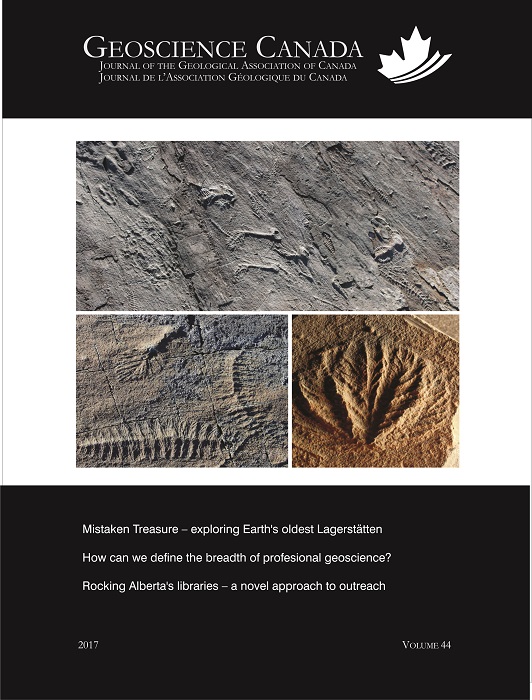Published 2017-07-21
How to Cite
Abstract
Mistaken Point Ecological Reserve (MPER) World Heritage Site, on the southeastern coast of Newfoundland, Canada, is one of the foremost global Ediacaran fossil localities. MPER contains some of the oldest known assemblages of the soft-bodied Ediacaran macrobiota, and its fossils have contributed significantly to Ediacaran paleobiological research since their initial discovery in 1967. Preservation of multiple in situ benthic paleocommunities, some comprising thousands of specimens, has enabled research into Ediacaran paleoecology, ontogeny, taphonomy, taxonomy and morphology, offering insights into the possible phylogenetic positions of Ediacaran taxa within the tree of life. Meanwhile, a thick and continuous geological record enables the fossils to be placed within a well-resolved temporal and paleoenvironmental context spanning an interval of at least 10 million years. This article reviews the history of paleontological research at MPER, and highlights key discoveries that have shaped global thinking on the Ediacaran macrobiota.
RÉSUMÉ
Le site du Patrimoine mondial de la Réserve écologique de Mistaken Point (MPER), sur la côte sud-est de Terre-Neuve, au Canada, est l'une des principales localités fossilifères édiacariennes de la planète. Le MPER renferme quelques-uns des plus anciens assemblages connus de macrobiote édicarien à parties molles, et ses fossiles ont contribué de manière significative à la recherche paléobiologique édiacarienne depuis leur découverte en 1967. La préservation de multiples paléocommunautés benthiques in situ, dont certaines comptant des milliers de spécimens, a permis de faire des recherches en paléoécologie, ontogenèse, taphonomie, taxonomie et morphologie de biotes édiacariens, ce qui a permis d’avoir un aperçu de différentes positions phylogénétiques possibles des taxons édiacariens dans l'arborescence biologique. Aussi, grâce à une colonne géologique épaisse et continue, on a pu placer ces fossiles dans un contexte temporel et paléoenvironnemental bien circonscrit qui s’étend sur un intervalle d'au moins 10 millions d'années. Cet article passe en revue l'histoire de la recherche paléontologique au MPER et souligne les découvertes majeures qui ont façonné la réflexion sur le macrobiote édiacarien.
